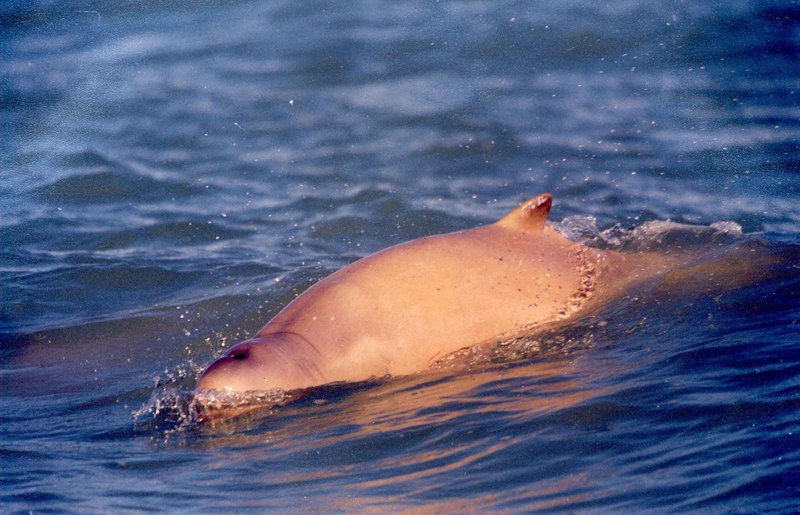| 새로운 사진 | 신문속의 동물소식 | 신기한 동물이야기 | 동물의 소리 | 동물동화상 | 사진 올리기 | 사진 저작권 | English |
|---|
| 재미있는 동물사진 | 괴수/괴어/엽기 동물사진 | 동물이름사전 | 동물목록 | 바깥고리 | 창고입구 | 똑똑누리집 |
|---|
| 이미지 정보 | Original File Name: Australian Snubfin Dolphin (Orcaella heinsohni).jpg Resolution: 2362x1520 File Size: 206241 Bytes Date: 2005:07:04 13:22:10 Upload Time: 2007:09:24 05:00:25 | |
| 올린이 | 이름 (메일주소): Unknown | |
| 사진 제목 | Australian Snubfin Dolphin (Orcaella heinsohni) - Wiki | |
 |
| Email : 카드 | 올린이 | 운영자 사진삭제 정보수정 Admin |
| 설명 | Australian Snubfin Dolphin (Orcaella heinsohni) - Wiki
Australian Snubfin Dolphin
The Australian Snubfin Dolphin (Orcaella heinsohni) is a recently recognised species of dolphin, scientifically described in 2005. It is closely related to the Irrawaddy Dolphin, and closely resembles it. Until very recently it was thought to be an Irrawaddy dolphin. However, the Australian Snubfin Dolphin is tri-colored, while the Irrawaddy dolphin only has two colors on its skin. Also the skull and the fins show minor differences between the two species. The taxonomic name, Orcaella heinsohni, was chosen in honor of George Heinsohn, an Australian biologist who worked at James Cook University, "for his pioneering work on northeast Australian odontocetes, including the collection and initial analysis of Orcaella heinsohni specimens which form the basis for much of our knowledge of the new species."(Beasley, Robertson & Arnold 2005) Discovery New species of large mammals are quite rarely described nowadays, and those that are are usually from remote areas - such as the Saola - or are otherwise rarely encountered, see for example Perrin's Beaked Whale, or the Spade-toothed Whale which is only known from a few bones cast ashore. In fact, the Australian Snubfin is the first new dolphin species to be described in 56 years. It is unusual among recently-described mammals in that a population is accessible for scientific study. Nonetheless, the existence of snubfin dolphins in the waters of northern Australia had only become known in 1948, when a skull was found at Melville Bay (Gove Peninsula, Northern Territory). This individual apparently had been caught and eaten by aboriginals. However, the discovery remained unnoted until discussed by Johnson (1964), and soon thereafter a Dutch skipper had his observaions of the then-unrecognized species published (M??rzer Bruyns 1966). Two scientists, Isabel Beasley of James Cook University and Peter Arnold of Museum of Tropical Queensland, took DNA samples from the population of dolphins off the coast of Townsville, Queensland. They then sent the samples to the National Oceanic and Atmospheric Administration's Southwest Fisheries Science Center in La Jolla, California. The results showed that George Heinsohn was correct in his hypothesis (Arnold and Heinsohn 1996) that the Townsville population was a new species. The holotype QM JM4721 (JUCU MM61) is the skull and some other bones of an adult male found drowned in a shark net at Horseshoe Bay, Queensland, on April 21, 1972. It was about 11 years old at the time of its death.(Beasley, Robertson & Arnold 2005) Description O. heinsohni is subtly three-colored: brownish on the top, lighter brown along the sides, and a white belly; the Irawaddy Dolphin, on the other hand, is uniformly slaty grey except for the white belly. The new species has a rounded forehead, very unlike other dolphin species in Australia, and the very small, "snubby" dorsal fin distinguishes it from other dolphins in its range. The lack of a groove on each side of the back and the presence of a neck crease further distinguishes this species from its relative. Range and status In the Pacific Ocean off Townsville, about 200 individual Snubfin dolphins were found. It is expected that the range of the species extends into Papua New Guinea - that is, O. heinsohni is endemic to the northern half of the Sahul Shelf -, but that the majority live in Australian waters. They are not thought to be common and are being given a high conservation priority. Its IUCN classification of "data deficient" refers to this species and the Irawaddy Dolphin combined (Cetacean Specialist Group 1996). Threats include drowning in fishery and anti-shark nets; while some hunting by indigenious people probably occurs (as evidenced by the 1948 specimen), this is likely to be insignificant compared to the threat posed by drowning. http://en.wikipedia.org/wiki/Australian_Snubfin_Dolphin
| |||
| 저작권 정보 | 사진의 저작권은 원저작자에게 있습니다. 동물그림창고는 동물관련 사진을 전시할 수 있는 공간만을 제공합니다.사진을 사용하고자 할 경우에는 저작권자와 협의하시기 바랍니다. |
|
|
|
| |||||||
| CopyLeft © since 1995, 동물그림창고. All rights may be reserved. | ||||||||
Stats